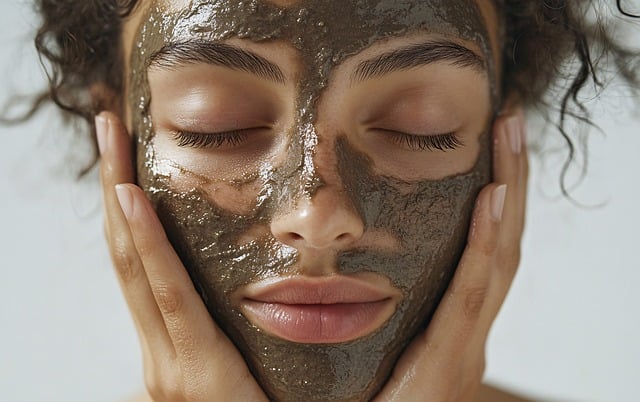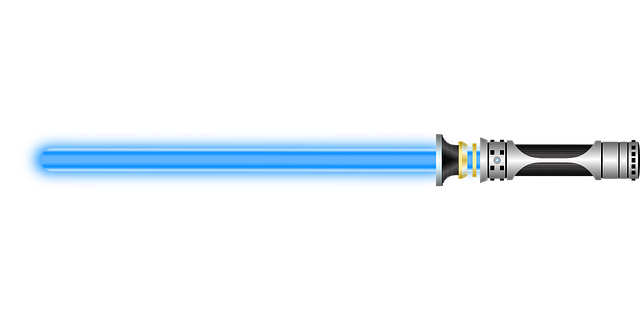Laser skin treatments are popular spa procedures that use advanced lasers to stimulate collagen production and address various skin conditions non-invasively. Different laser types target specific concerns like wrinkles, age spots, and acne scars. Fractional lasers promote collagen renewal with minimal downtime, while intense pulsed light (IPL) therapies even out skin tone and treat vascular lesions. Choosing a reputable spa with board-certified professionals ensures safety and effectiveness. Pre-treatment preparation includes consulting a dermatologist, avoiding certain medications and sun exposure, and following instructions on the day of the procedure. Post-treatment care involves adhering to guidelines for moisturizing, sun protection, and monitoring healing. Laser skin treatments carry temporary side effects but can significantly improve skin texture and appearance, as evidenced by numerous satisfied clients.
“Uncover the transformative power of laser resurfacing with our comprehensive guide. This article delves into the world of Laser Skin Treatments, offering an insightful journey through their science and benefits for various skin concerns. From understanding the technology to choosing the right spa, we provide a step-by-step overview. Learn about preparation, procedure expectations, potential side effects, and follow-up care. Discover real success stories and unlock the secrets to achieving youthful, radiant skin with Laser Skin Treatments.”
Understanding Laser Skin Treatments: A Comprehensive Overview

Laser skin treatments have gained immense popularity in the spa industry due to their ability to transform and revitalize the appearance of skin. These advanced procedures utilize focused beams of light, or lasers, to encourage collagen production and improve various skin conditions. By breaking up damaged skin cells and stimulating healthy tissue growth, laser treatments offer a non-invasive approach to achieving smoother, more youthful-looking skin.
There are multiple types of laser skin treatments available, each designed for specific concerns such as wrinkles, fine lines, age spots, and acne scars. For instance, fractional lasers target individual skin cells, promoting collagen renewal without causing significant downtime. In contrast, intense pulsed light (IPL) therapies treat broader areas by targeting melanin, making them effective for addressing uneven skin tone and vascular lesions. Understanding these treatments and their benefits is essential when considering laser skin procedures for achieving a radiant, healthy complexion.
The Science Behind Laser Resurfacing Technology

Laser resurfacing, a cutting-edge skincare procedure, has taken the beauty industry by storm as one of the most effective Laser skin treatments available. This innovative technology involves using lasers to gently reshape and renew the skin’s surface, addressing various concerns like fine lines, wrinkles, acne scars, and uneven texture. The science behind it lies in the precise interaction between laser light and the skin’s natural healing process.
During the procedure, a concentrated beam of light is directed onto the skin, targeting specific depth layers without causing damage to the surrounding areas. This stimulates collagen production, the body’s natural protein that provides skin elasticity and firmness. As collagen levels increase, the skin’s appearance improves, revealing a smoother, more youthful complexion. Laser resurfacing offers a non-invasive approach with minimal downtime, making it a popular choice for those seeking a subtle yet significant enhancement in their skin’s overall quality.
Benefits of Laser Skin Treatments for Various Skin Concerns

Laser skin treatments have emerged as a popular and effective solution for various skin concerns, offering a non-invasive approach to achieving smoother, more youthful-looking skin. One of the key benefits is its ability to target specific issues, such as fine lines, wrinkles, and hyperpigmentation, with precision. The advanced technology used in laser resurfacing procedures promotes collagen production, which helps to improve skin texture and elasticity, resulting in a radiant and rejuvenated complexion.
These treatments are particularly effective for acne scars, providing a long-lasting solution by stimulating the growth of new, healthy skin cells. Additionally, they can address sun damage, reducing the appearance of age spots and uneven skin tone. Many individuals also experience improved overall skin health and texture after laser skin treatments, leaving their skin feeling refined and looking more vibrant.
Choosing the Right Laser Resurfacing Spa: What to Look For

When selecting a laser resurfacing spa, it’s crucial to consider several factors to ensure optimal results and safety. Look for establishments that employ board-certified dermatologists or experienced estheticians specializing in laser skin treatments. Their expertise ensures the use of advanced technology and personalized techniques suited to your specific skin concerns.
Additionally, check their facility’s hygiene standards, equipment maintenance, and patient testimonials. A reputable spa should offer a range of laser resurfacing options, including ablative (e.g., CO2) and non-ablative lasers (e.g., Erbium YAG), catering to different needs and budgets. They should also provide detailed pre- and post-treatment care instructions for the best possible outcomes.
Preparing for Your First Laser Skin Treatment Session

Before your first laser skin treatment, it’s essential to prepare thoroughly for optimal results and minimal discomfort. Start by consulting with a qualified dermatologist or spa specialist who can assess your skin type and goals. They will guide you on pre-treatment care, which may include avoiding certain medications, skincare products, and sun exposure several days prior. It’s crucial to disclose any medical conditions or recent treatments as these could impact the procedure.
On the day of your session, arrive early at the spa or clinic. Follow any specific instructions provided by the staff regarding preparation, such as wearing comfortable clothing and removing makeup or certain lotions before entering the treatment room. Relaxation is key; take deep breaths to ease any anxiety. The technician will explain the process step-by-step, addressing your concerns, ensuring you feel at ease, and setting clear expectations for laser skin treatments.
What to Expect During and After Laser Resurfacing Procedure

During a laser resurfacing procedure, a specialized laser is used to gently resurface the skin, removing outer layers and stimulating collagen production. The treatment is typically non-invasive and can be performed on various parts of the body. Patients often experience minimal discomfort during the process, with most providers offering topical anesthetics to ensure a more comfortable experience. After the procedure, it’s common to see redness and swelling, similar to a sunburn, which usually subsides within a few days.
In the aftermath, the skin is smoother and more even-toned, as the laser has reduced fine lines, wrinkles, and scars. It’s crucial to follow post-treatment instructions, including applying recommended moisturizers and avoiding direct sunlight without protection. Laser skin treatments offer significant improvements in skin texture and appearance, making them a popular choice for those seeking enhanced beauty and confidence.
Common Side Effects and Risks of Laser Skin Treatments

Laser skin treatments, while popular for achieving smoother, younger-looking skin, are not without potential side effects and risks. Common immediate reactions include redness, swelling, and sensitivity to sunlight—sometimes lasting several days. These symptoms are usually temporary and subside as the skin heals. More serious yet rare complications may include infection, scarring, and changes in skin pigment, which can be long-lasting.
The risk of these adverse effects varies depending on the type of laser used, the area being treated, and an individual’s skin type and health history. It’s crucial for prospective clients to discuss these potential risks openly with their treating provider before undergoing any laser skin treatment procedure.
Maintenance and Follow-up Care for Optimal Results

After a laser skin treatment, proper maintenance and follow-up care are essential for achieving optimal results from your Laser Resurfacing Spa experience. It’s crucial to adhere to post-procedure guidelines provided by your dermatologist or spa specialist. This often includes avoiding direct sun exposure, using recommended moisturizers, and steering clear of certain skincare products that may irritate the treated skin.
Regular check-ins with your dermatologist are also vital to monitor healing progress and address any concerns promptly. Following these steps ensures that your skin regains its radiance, texture improves, and any potential side effects are managed effectively. Laser skin treatments demand dedication to post-care routines for the best long-term outcomes.
Real Stories: Success Stories from Laser Resurfacing Spas

At many premium spa facilities, laser resurfacing has become a popular and effective way to achieve smoother, more youthful-looking skin. Real stories from satisfied customers highlight just how transformative these laser skin treatments can be. One client, Sarah, shares her experience at a leading spa, where she underwent a series of laser sessions to address fine lines and wrinkles around her eyes and forehead. After just a few treatments, she notices a significant improvement in her skin texture and a reduction in the depth of her wrinkles.
These success stories are not isolated; many individuals have attested to the long-lasting results of laser resurfacing. From reducing acne scars and hyperpigmentation to minimizing the appearance of age spots and improving overall skin tone, laser skin treatments offer a non-invasive approach to skincare that delivers remarkable outcomes. As more people share their journeys, it becomes evident that laser resurfacing is a game-changer for achieving clear, radiant, and rejuvenated complexions.
